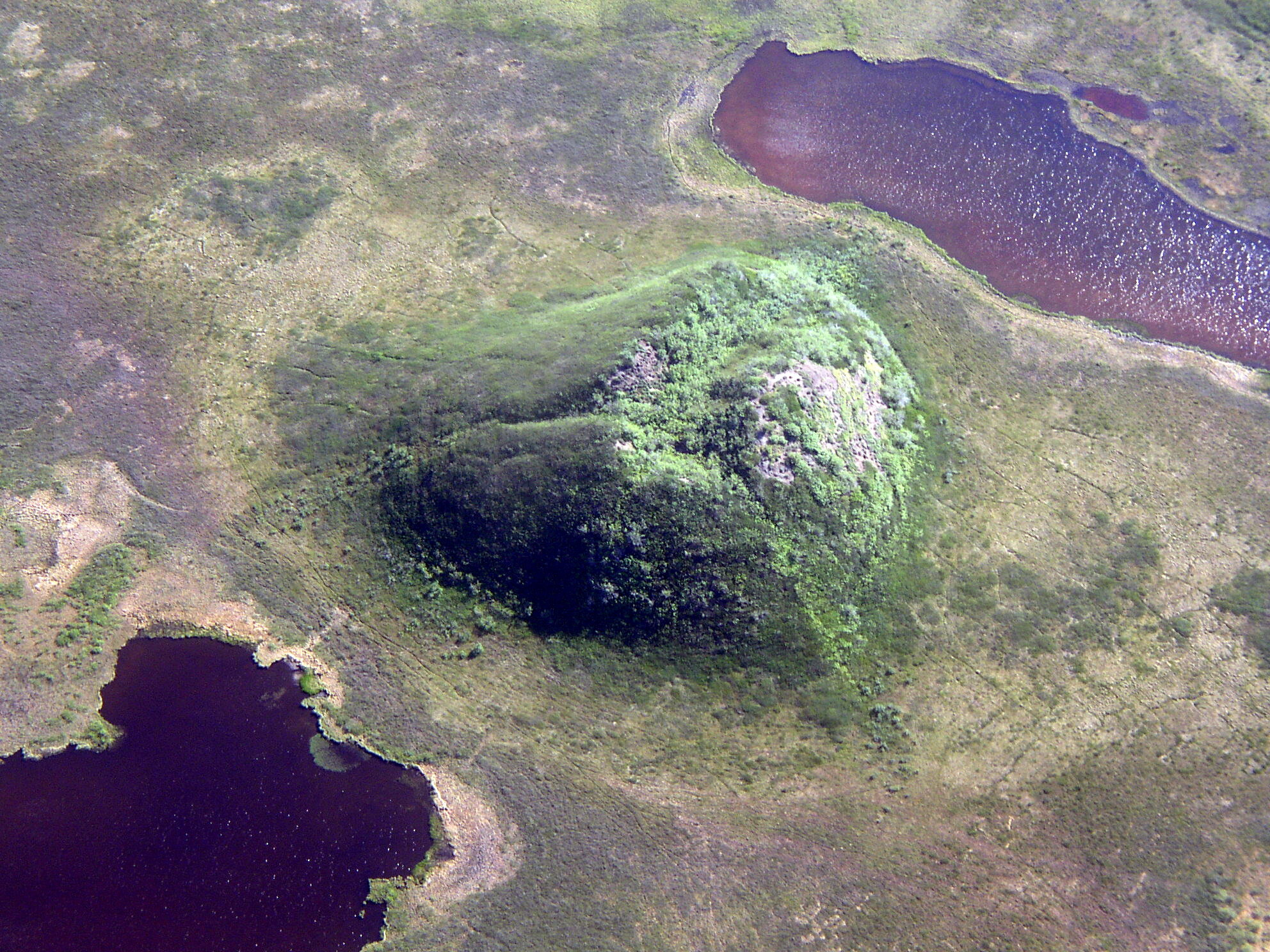mound-form
Emergence Setting and Hydrology
Sketch of Mound Form spring type. A=aquifer; I=impermeable stratum; S=spring source. Fault lines are shown where appropriate. The inverted triangle represents the water table or piezometric surface. Drawing by Victor O. Leshyk www.victorleshyk.com.
Emerges from a mineralized, ice, or organic mound, sometimes magmatic or fault systems.
Montezuma Well in central Arizona, a limnocrene pool in a collapsed carbonate mound, supports a high concentration of endemic species due to its unique water chemistry and isolation (Stevens 2007).
For Example: Montezuma Well, AZ
Description
Mound-form springs emerge from precipitate (typically carbonate) mounds or peat mounds. Common in the central Australia's Great Artesian Basin, they also occur in Western Australia and North America (Knott and Jasinska 1998, Springer et al. 2008). Mound springs formed from travertine are often thermal, found along active magmatic or fault systems. "Black smokers" on the ocean floor may be extremely hot, discharging large amounts of carbon dioxide from deep in the earth (Crossey et al. 2008). Due to their unique water chemistry, and sometimes due to their isolation in arid regions, these springs often support high biodiversity and endemism (Knott and Jasinska 1998; Blinn 2008).
Pingo formation, photo courtesy of R.J. Johnson.


